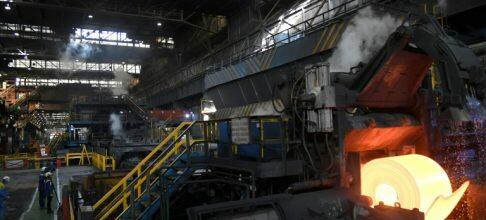Powerful AI technology does not automatically guarantee its adoption and use. What is important and should be considered at the top of the priorities is the creation of AI-based innovations with clear applications, both for society and for the market.
If we remain focused only on building ever-better AI capabilities, we risk creating an extraordinary technology without clear applications, public acceptance, or tangible returns for businesses. Instead, we need to focus on developing a culture of innovation around AI that shapes the technology with society and business at its core. Innovation is what will make businesses successful in an AI-driven future.
Featured Society & Business
Technology alone does not transform the way we live and work. Instead, it must be combined with innovation. Electricity was a major technological breakthrough, but it was technology combined with innovation, in the form of things like the light bulb, appliances, and electric motors to run machines, that was transformative. What is the difference between a technological development and an innovation? Both create something new or reimagine something existing that provides value or a positive impact. The real difference is that innovations are also desirable to users, feasible with current technology, and interesting to the market. In other words, innovations take society and business into account, and have clear applications that improve the user experience, making people want to embrace the underlying technology.
AI developers must prioritize innovation, designing applications to put adoption and use at the forefront. Ultimately, AI must create a better experience for people, or we risk creating technological developments without widespread use and acceptance.
Culture of innovation
Businesses can absolutely foster a culture of innovation where new technologies, including AI, are built with a focus on clear uses and real value. We can foster this culture in clear and concrete ways within a company. First, start by defining an end goal that puts innovation at the center—this can be the guiding star for your people at work. Once a vision for innovation is defined, the building blocks for innovation within the enterprise can be created, focusing on collaboration and communication, creativity, risk-taking, and action.
Collaboration and communication
Innovation requires open communication and collaboration. In your organization, you need to foster an environment where ideas can be shared freely, and where everyone feels empowered to contribute without fear of judgment or hierarchy. You also need to foster cross-functional, diverse, and inclusive collaboration, as different perspectives often lead to breakthrough ideas. You will also need to encourage teams to work together, share knowledge, and learn from each other.
Creativity and risk taking
As employees work together, the company should also provide them with the space to experiment, allowing them autonomy and decision-making authority to explore and implement innovative ideas. Calculated risk-taking should be encouraged, and there will be a need to learn from both successes and failures. Innovative efforts should be celebrated and rewarded, even when they do not yield immediate positive feedback. It will also be important to reward a learning mindset and provide opportunities for ongoing training and skills development.
Concrete actions
Additionally, employee culture will need to be supported with concrete actions, providing workers with the tools and support needed to turn ideas into reality. This means allocating resources, including time, budget, and technology, to support innovative initiatives. It will also require investing in research and development, offering training programs, and creating spaces dedicated to experimentation.
Commitment to innovation should be demonstrated by actively participating in the process, encouraging leaders at all levels to engage in innovative thinking, own their ideas, and support their teams' initiatives. When the example is set through words and actions, employees will follow the company and the culture of innovation will thrive.
AI: Innovation Assistant
The exciting thing about AI is its real ability to help a company capitalize on the culture of innovation within it. AI can analyze systems, processes, and even problems, and suggest areas for improvement that can become the focus of a company’s innovation efforts. Innovations often begin when the problems to be solved become clear. AI can even suggest solutions, and AI teams can help create the innovations that make them happen. For example, a company might ask AI to help it identify which single option would most reduce downtime on its production line, or identify reducing component failures as the top area for improvement. It could then ask AI how to make that part better, so it’s less likely to fail. The end result would be an innovation, a reimagined thing that improves the manufacturing experience, enabled by company culture and AI.
A revolution in intelligence and society
We are living in the early stages of a revolution, in which artificial intelligence will soon surpass human intelligence by several orders of magnitude. In the future, this will change everything. But the speed and success with which the way we live and work will transform will depend not only on the power of technology, but also – and more importantly – on innovation. Great technology cannot transform society if it is not used. The people – consumers, employees, companies, etc. – who use AI on a daily basis will be the true conduits of its revolution. To take AI to the next level, we need forward-thinking people and companies that prioritize innovation. For example, with products like Dall-E or Midjourney, we can produce anything we want graphically. But if we keep making the same suggestions that are limited to our current ways of thinking, we will only get new images of things and ideas that already exist. If we keep asking AI to draw a cat, it will just do that.
It is the people who apply AI technology in innovative ways—creating novel graphics for new applications, or designing new products and services that enhance experiences—who will take AI to the next level.
We live in exciting times. Not everyone can experience the birth and evolution of a revolution on the scale of agriculture and industry, but if we focus on innovation, I believe AI will live up to the hype, transforming work and society in countless ways.
SUBSCRIBE TO OUR NEWSLETTER
From our editors straight to your inbox
Get started by entering your email address below.














